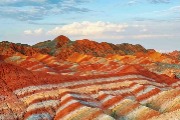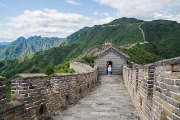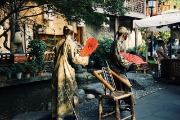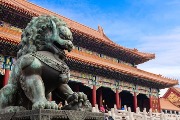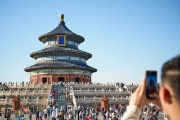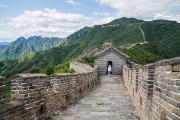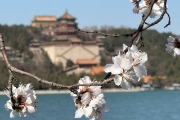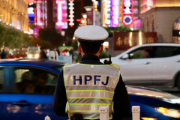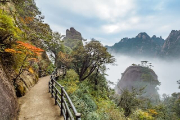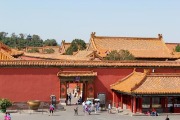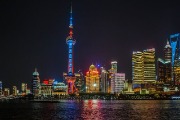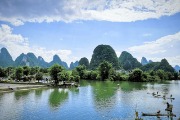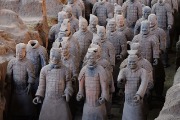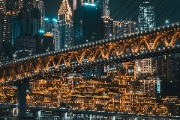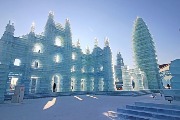China Summer Palace
The royal gardens where ancient Chinese emperors vacationed.
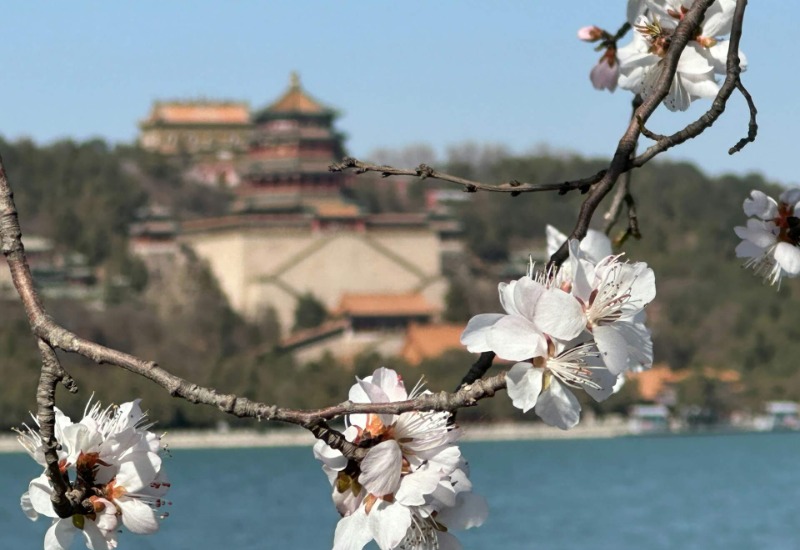
We’ll introduce you to whether Beijing’s most beautiful royal garden is worth visiting, and dive into the Chinese culture and stories behind the key sights in the China Summer Palace (颐和园). At the end, we’ve got a Q&A, ticket info, and some practical tips. By the time you’re done, you’ll see that the Beijing Summer Palace is not just a gorgeous classic Chinese garden—it’s deeply connected to ancient royal life, politics, and beliefs.
Table of Contents
Why the Summer Palace is worth visiting
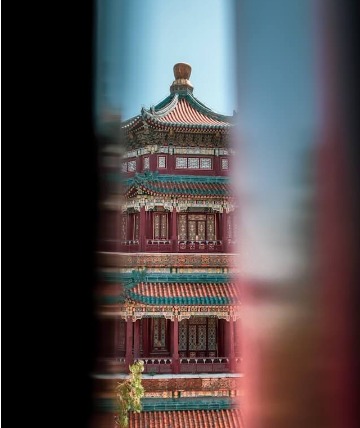
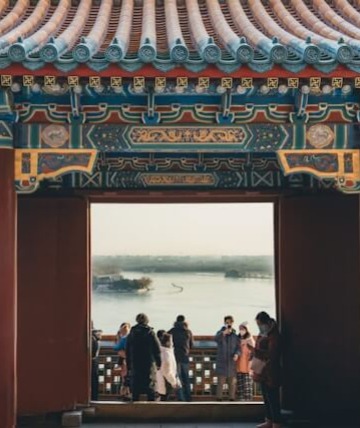
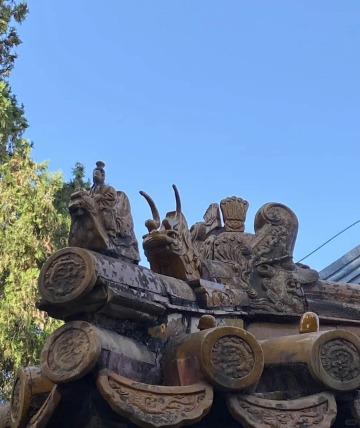
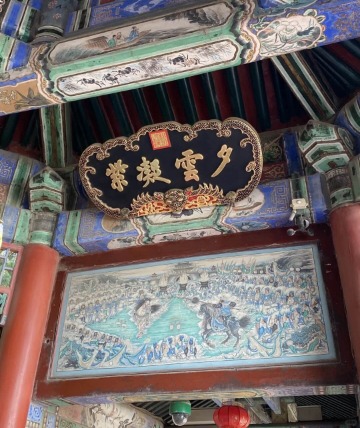
1. It’s China’s largest surviving royal garden and showcases the country’s top-tier garden aesthetics.
The Summer Palace dates back to the reign of Emperor Qianlong (1711-1799) of the Qing Dynasty. Qianlong, the sixth emperor of the Qing, ordered its construction in Beijing in 1749 as a private retreat. He was personally involved in the planning and design, making the garden a reflection of the imperial aesthetic and philosophical ideals of ancient China.
The Summer Palace Beijing is often called the “number one classical garden in China.” It embodies the Chinese aesthetic principle of “the unity of mountains and water.” The natural landscape—mountains, lakes, trees, and buildings—blend together seamlessly, emphasizing harmony between the natural elements. In traditional Chinese thought, mountains and water represent the balance of opposites: stillness and movement, permanence and change, clarity and mystery. These contrasts are brought into harmony within the landscape, reflecting the depth of Chinese philosophical thinking.
Besides this concept of “the unity of mountains and water,” the China Summer Palace also features architectural styles from different parts of China. You’ll find influences from northern courtyard homes, southern water towns, and Tibetan Lamaist temples, among others. It’s like a one-stop tour of China’s diverse architectural heritage.
2. Let’s see how ancient Chinese emperors took their vacations.
The emperors of the Qing Dynasty loved to vacation at the Summer Palace. One reason was the beautiful, peaceful environment—it was a nice change from the formality of the Forbidden City. Another reason was that here, they didn’t have to follow all the strict rules they had to in the palace, so they could actually relax. The Summer Palace’s Long Corridor, Longevity Hill, and Kunming Lake provided the emperors with a gorgeous natural setting, perfect for strolling. The emperor and his mother also enjoyed leisurely boat rides on Kunming Lake. Of course, even on vacation, the emperor still had to take care of state affairs.
You might not know this, but the Forbidden City, despite being a royal palace, has very few trees. There are three main reasons for this: 1) Trees could hide assassins, so fewer trees meant better security for the emperor and the royal family. 2) Most of the buildings in the Forbidden City are made of wood, so in case of a fire, the consequences could be catastrophic. Reducing the number of trees helped lower the fire risk. 3) Tall trees could block the sunlight and were seen as diminishing the imperial dignity. The Forbidden City needed open spaces to symbolize the emperor’s supreme power.
So, being surrounded by buildings and lacking trees for so long must have felt stifling for the emperor. That’s why taking a trip to the Summer Palace was such a refreshing and enjoyable break. After visiting the Forbidden City, you can head to the Summer Palace and experience what it might have been like for an ancient Chinese emperor on vacation.
Main Sights of the Summer Palace
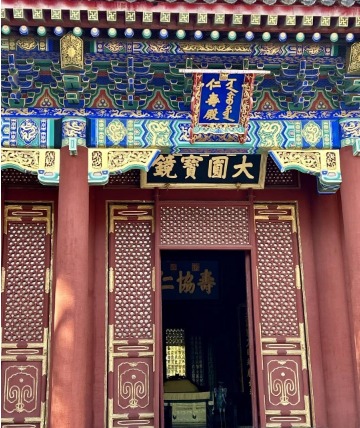
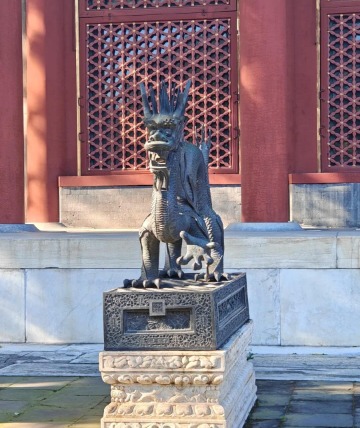
The Hall of Benevolent Longevity (仁寿殿)
Most visitors enter the China Summer Palace through the East Gate, and the Hall of Benevolent Longevity is the first major sight you’ll see right after entering. During the Qing Dynasty, Emperor Guangxu (光绪皇帝) and Empress Dowager Cixi (慈禧太后) often used this hall to handle state affairs. Outside the hall, you’ll notice symmetrical bronze dragons and phoenixes. In traditional Chinese symbolism, the dragon represents the emperor, and the phoenix represents the empress. However, when Cixi was in power, she had the dragon and phoenix switched around to assert her own authority.
Empress Dowager Cixi was the de facto ruler of the late Qing Dynasty, holding power for nearly half a century. Her relationship with Emperor Guangxu was not a mother-son relationship, but rather that of an aunt and nephew. Despite this, Guangxu still referred to her as “father” in the palace—a title that reflected both his fear and dependence on her. So, while Guangxu may have formally ruled, the real decision-maker in the Hall of Benevolent Longevity was actually Cixi herself.
Did you know? There was a well-known rule in ancient China that the women of the imperial harem were not allowed to interfere in politics. This rule was designed to maintain the concentration of imperial power and prevent the emperor’s wives and their families from influencing national politics. Cixi’s ability to rise above this rule and wield such immense power shows just how strong and respected she was as a female politician at the time.
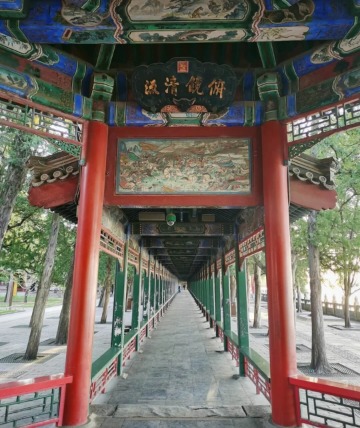
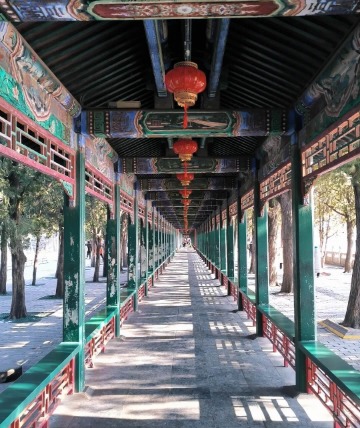
The Long Corridor (长廊)
The Long Corridor is the path that leads to the Yiheyuan Summer Palace’s main attraction, the Tower of Buddhist Incense. It’s also been listed in the Guinness World Records as the longest painted corridor in the world.
Originally, the corridor was built to give the emperor easy access to the northern shore of Kunming Lake, allowing him to stroll without getting soaked by rain or snow. The corridor is covered in over 14,000 colorful paintings, most of which depict scenes from China’s Four Great Classical Novels, like Dream of the Red Chamber, Journey to the West, Romance of the Three Kingdoms, and Water Margin.
Legend has it that Emperor Qianlong’s mother loved walking through the Long Corridor, listening to her maids tell stories. But over time, the maids ran out of new stories to share. So, to keep things interesting, they decided to paint the stories on the walls, turning the corridor into a living storybook of its own.
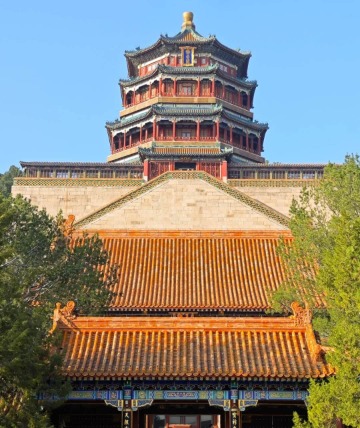
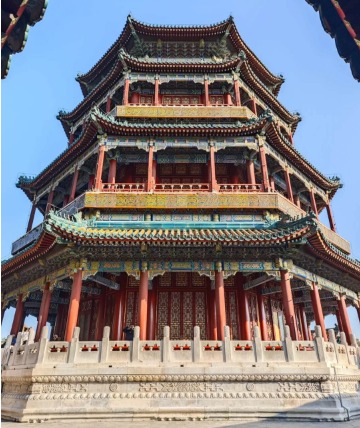
The Tower of Buddhist Incense (佛香阁)
The Tower of Buddhist Incense sits atop Longevity Hill and is the largest building in the Summer Palace. It was primarily built to house Buddhist statues. On holidays or special occasions, the emperor and royal family would come here to light incense and pray for peace and good fortune.
There’s a legend that the tower was originally designed to have nine stories. However, when they got to the eighth story, it collapsed. Emperor Qianlong took this as a sign from the heavens and decided to redesign it with just three stories.
Since the reign of the first Qing emperor, Huang Taiji, the Qing emperors practiced Tibetan Buddhism, especially Emperor Shunzhi, Emperor Kangxi, and Emperor Yongzheng. Emperor Shunzhi was so devoted to Buddhism that he became almost obsessed. It’s said that he admired the simple, detached life of a monk so much that he even took the Buddhist name “Xingchi”.
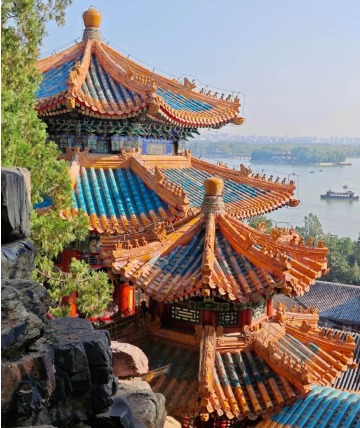
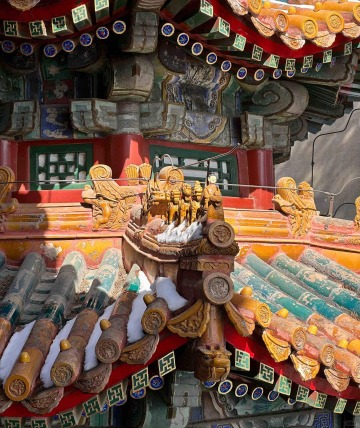
Tour in the Painting (画中游)
After visiting the Tower of Buddhist Incense, the next stop is Tour in the Painting, one of the most popular spots in the Summer Palace and a favorite on Chinese social media. These buildings were designed by Emperor Qianlong himself, built along the mountains in a beautifully arranged, staggered pattern.
So why is it called Tour in the Painting? It’s because the design is based on scenes from Emperor Qianlong’s dreams. He woke up from a vivid dream, quickly sketched the images, and then used those sketches to design this area. Visitors often say that the world from Qianlong’s dream must have been incredibly beautiful.
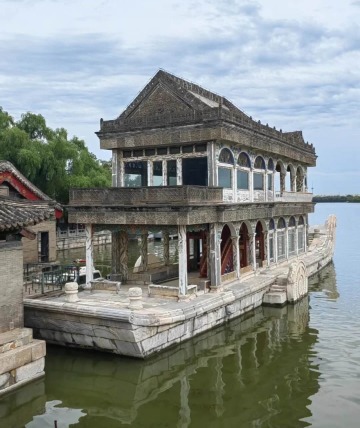
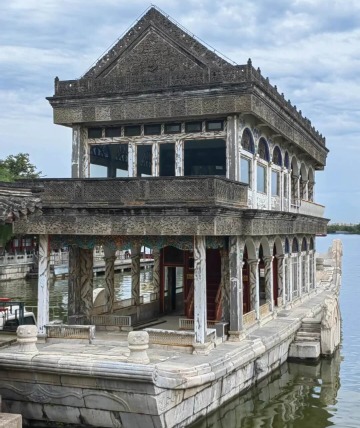
The Qingyan Boat (清晏舫)
After passing through Tour in the Painting, you’ll come to the Qingyan Boat. You’ll be surprised to see a Western-style stone boat in this traditional Chinese royal garden. The boat’s cabin is modeled after the French yacht Xiangfeng, and the upper deck features two stories of Western-style architecture. This building reflects the cultural exchange between China and the West at the time.
There’s an old Chinese saying: “Water can carry a boat, but it can also overturn it.” It means that the ruler is like the boat, and the people are like the water. The boat (ruler) depends on the support of the water (people) to stay afloat, but if the people become dissatisfied, they can also overthrow the ruler. This saying emphasizes the power of the people and the importance for rulers to listen to them. Emperor Qianlong wanted to express this governance philosophy through the stone boat, reminding future rulers to govern with caution and respect for the people’s will.
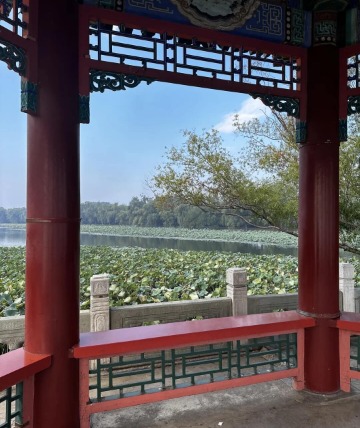
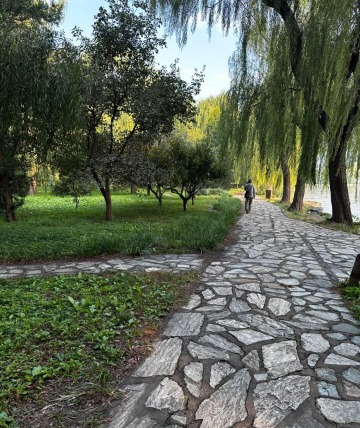
The West Causeway (西堤)
Unlike the crowded Tower of Buddhist Incense and Long Corridor, the West Causeway is a peaceful and beautiful spot, perfect for a slow stroll. As you walk along the causeway, you’ll get to enjoy great views of Kunming Lake and Longevity Hill. The path is lined with peach trees and willows. In spring, the peach blossoms are in full bloom, and in summer, the willow trees create a lush green scene.
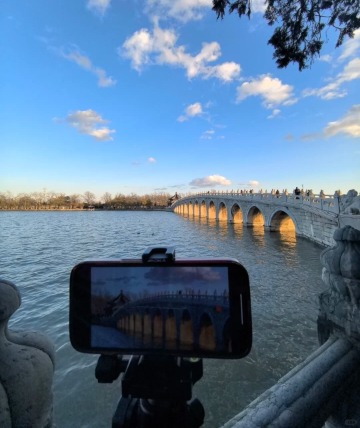
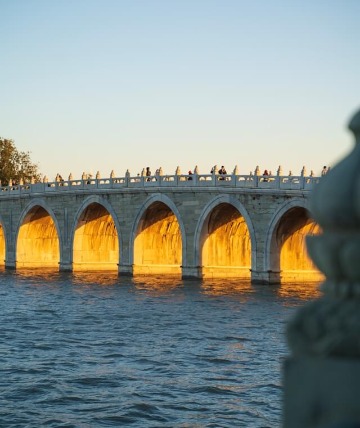
The Seventeen-Arch Bridge (十七孔桥)
Every pillar on the Seventeen-Arch Bridge is carved with a lion, a total of 544 lions. Around the winter solstice each year, the bridge creates a stunning sight known as the “Golden Light Through the Arch.” The setting sun shines through the bridge’s arches, casting a dazzling golden glow on the walls. It’s a truly spectacular scene.
Legend has it that Emperor Qianlong ordered the bridge to be built as a tribute to his mother. Because of this, it’s also known as the “Mother and Son Bridge.”
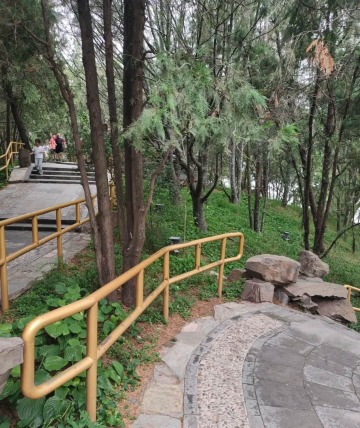
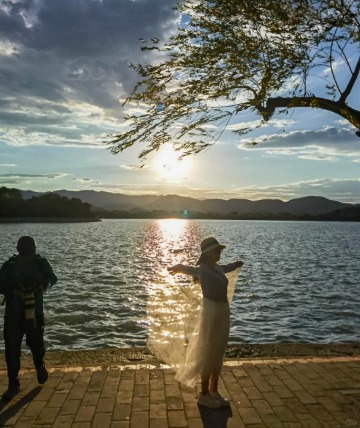
Nanhu Island (南湖岛)
Crossing the Seventeen-Arch Bridge, you’ll reach Nanhu Island. This spot used to be a viewing platform where Empress Dowager Cixi would watch drills at the Qing Dynasty navy school. Besides that, Nanhu Island also had a religious function. It’s home to a temple dedicated to the Dragon King of the West Sea. The temple became famous for its effectiveness in bringing rain, attracting emperors like Qianlong, Jiaqing, Daoguang, and Xianfeng to come and offer incense for rain.
So, who is the Dragon King? In Chinese folk belief, the Dragon King is considered the deity who controls the seas and the weather. There are four Dragon Kings in total, each ruling one of the seas: East Sea, South Sea, West Sea, and North Sea. You can think of it like the world of water is divided into four kingdoms, each ruled by a Dragon King, with fish, shrimp, and crabs acting as the people or soldiers of these watery realms.
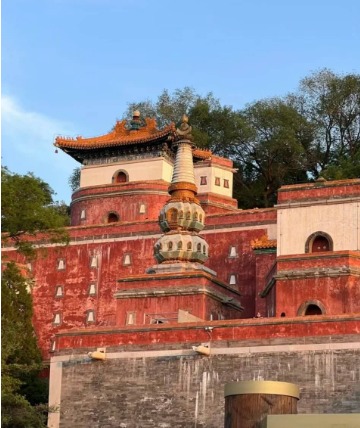
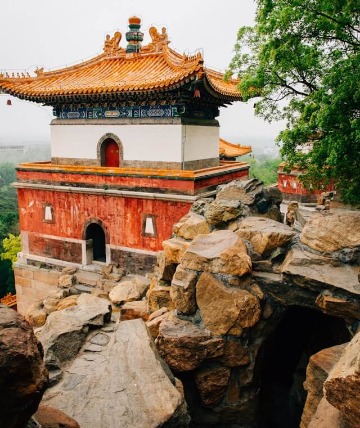
The Four Great Continents (四大部洲)
The Four Great Continents were designed based on the concept of the four continents in Buddhist cosmology. They showcase the essence of Buddhist culture through architecture, sculpture, painting, and other forms of art.
So, why do the buildings in the Four Great Continents area feature both Tibetan and Buddhist elements? This is because the type of Buddhism the Qing Dynasty rulers were first exposed to was Lamaist Buddhism, which originated in Tibet. Tibetan Buddhism had a deep influence during the Qing Dynasty. Buddhist ceremonies were often held in the imperial court, with the emperor and empress frequently visiting temples to light incense, listen to sutras, and observe rituals. These practices continued until the end of the Qing Dynasty.
The spread of Tibetan Buddhism in the Qing Dynasty wasn’t limited to the court—it was also widespread among the general population. Officials were required to wear prayer beads, regardless of their ethnicity or nationality. Any high-ranking official in the Qing court had to wear them. This shows just how much Buddhism influenced the Qing royal family, so it’s no surprise that the Summer Palace features the Four Great Continents.
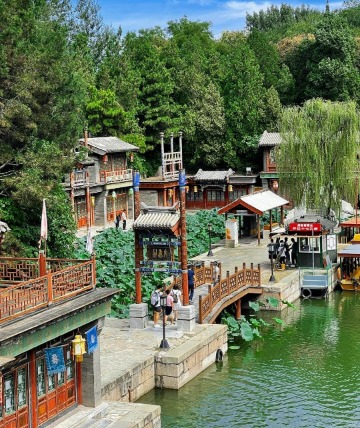
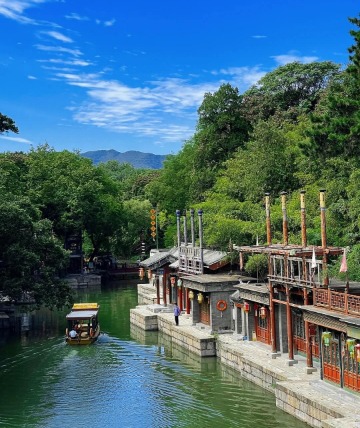
Suzhou Street (苏州街)
Suzhou Street is a really interesting ancient shopping street. Why is it so special? Because it wasn’t a real market for the common people—it was created by the imperial family to experience the bustling atmosphere of a regular street market. The shopkeepers are actually servants and palace maids in disguise. Whenever the emperor, empress, or other members of the royal family visited, they would “shop” and pretend to make deals, adding to the fun and authenticity of the experience.
Activities at the Summer Palace
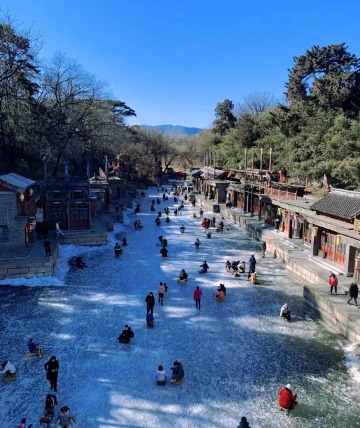
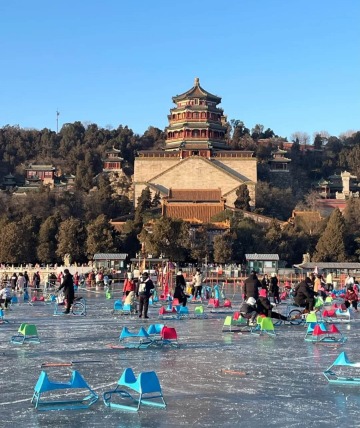
Ice Skating (滑冰)
Historically, the ice rink at the Summer Palace Beijing usually begins to freeze in late December. Once the ice is thick enough, the staff starts setting up the rink. The ice rink is divided into two main areas: the large Kunming Lake rink and the smaller Suzhou Street’s rear creek rink. There are various ice activities, including solo and tandem ice sleds, and even electric bumper cars on ice. Besides ice skating, the rink offers plenty of other fun activities. You can build snow sculptures, carve ice sculptures, or join in games like tug-of-war and ice hockey.
Exhibitions at the Summer Palace
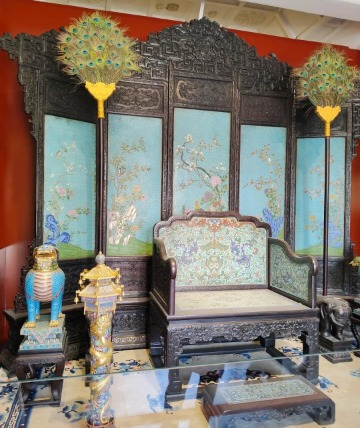
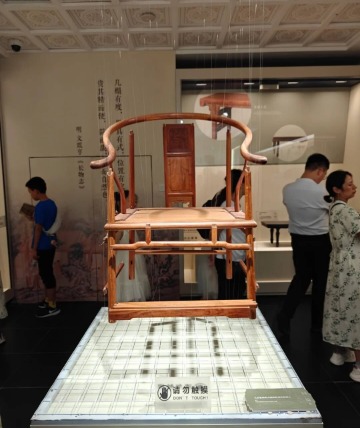
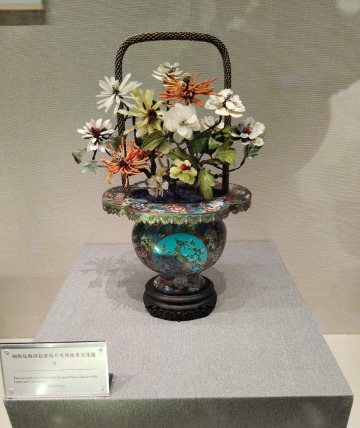
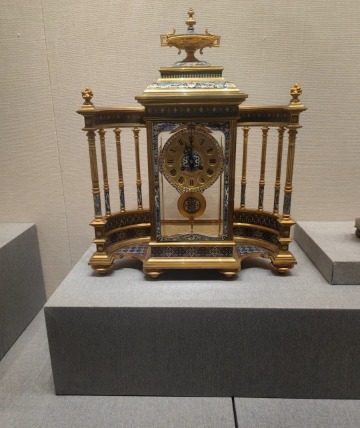
The Summer Palace Museum (颐和园博物馆)
The Summer Palace Museum’s collection includes a wide range of items like bronze, porcelain, jade, and calligraphy, mostly from the Qing Dynasty royal family. The museum also houses some foreign artifacts, which were either gifts from foreign diplomats or purchased through official channels. These artifacts come from countries like Britain, France, Japan, Germany, Austria, and the United States. Not only do they showcase the cultural exchange between the East and West at the time, but they also offer a glimpse into the life at the Qing court in its later years.
The Way to Explore the Summer Palace
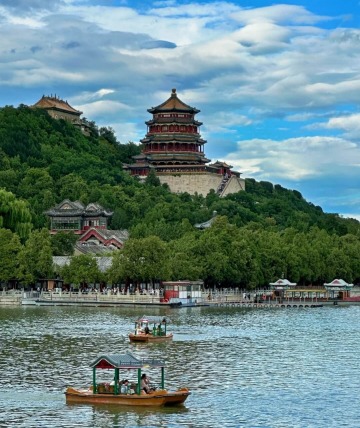
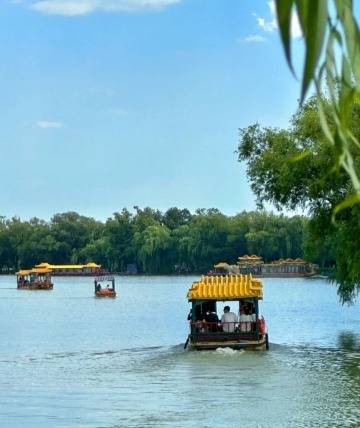
Boat Ride (游船)
Kunming Lake makes up about three-quarters of the Summer Palace’s total area, so taking a boat ride is one of the best ways to explore. As the boat gently glides across the lake, you can enjoy close-up views of the lakeside scenery, feel the coolness of the water, and enjoy the refreshing breeze.
There are several types of boats to choose from: the 6-person electric boat ($28/hour) for those who prefer a relaxing ride; the 4-person rowboat ($11/hour) for visitors who enjoy the traditional rowing experience; and the 6-person pedal boat ($17/hour) for those looking to try a fun pedal-powered ride.
FAQ about the Summer Palace
1. Why was the Summer Palace built?
The Summer Palace China, originally called Qingyi Garden, was built by Emperor Qianlong to honor his mother. After taking her on six trips to the Jiangnan region, his mother fell in love with the style of the gardens there. So, when they returned to Beijing, the emperor ordered the construction of this royal garden.
2. Has the Summer Palace ever been damaged?
Yes, it has been damaged twice. The first time was in 1860, when the Anglo-French forces invaded Beijing and burned down the Summer Palace (which was called Qingyi Garden back then). It was rebuilt starting in 1886 and renamed the Summer Palace. The second time was in 1900, when the Eight-Nation Alliance invaded Beijing again, and the Summer Palace was damaged once more. Restoration work began in 1902.
Many cultural relics from the Summer Palace (Yiheyuan China) were stolen and taken overseas, mostly to countries like the UK and France. Some of the important pieces are now in places like the British Museum and the French National Library, while others were destroyed or lost.
3. Are the Summer Palace and the Old Summer Palace the same place?
No, they’re not the same place. The Summer Palace and the Old Summer Palace are only about 4 kilometers apart.
How to Get to the Summer Palace
You can take Beijing’s Line 4 subway and get off at Beigongmen Station. After exiting from Gate D, it’s about a 10-minute walk to the North Gate of the Yiheyuan Summer Palace.
Hours & Fees
Hours
The park opens at 6:00 AM and stops allowing entry at 7:00 PM. It closes at 8:00 PM.
Time Required
5-6 hours.
Fees
Entrance ticket: 30 CNY (approx. 4 USD)
Combo ticket: 60 CNY (approx. 8 USD). The combo ticket gives you access to the buildings inside this Beijing Palace.
Practical Tips
Wear comfortable sneakers because there’s a lot of walking in the Beijing Summer Palace. Also, be sure to bring enough water.
The Old Summer Palace isn’t far from the Summer Palace, but it’s also huge. If you plan to visit both in one day, it’s going to be exhausting, and you might not have time to see everything.

